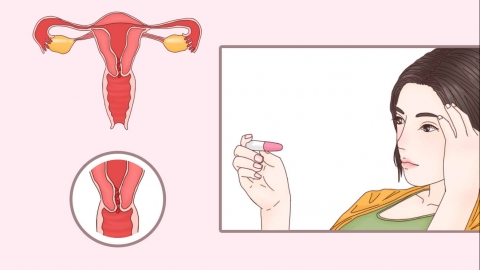Which diseases can cause female infertility?
Generally, diseases that may lead to female infertility include polycystic ovary syndrome, hyperprolactinemia, salpingitis, endometriosis, and congenital uterine malformations. A detailed analysis is as follows:

1. Polycystic Ovary Syndrome (PCOS)
Polycystic ovary syndrome is a common gynecological endocrine disorder characterized by polycystic ovarian changes, elevated androgen levels, menstrual irregularities, and infertility. Dysfunction in the hypothalamic-pituitary-ovarian axis leads to excessive androgen secretion, which inhibits normal follicular development and ovulation, resulting in anovulation or oligoovulation. Additionally, insulin resistance may also be present, affecting ovarian function and endometrial receptivity, which is unfavorable for embryo implantation. Patients may follow medical advice to use medications such as dydrogesterone tablets, progesterone capsules, and medroxyprogesterone acetate tablets to alleviate symptoms.
2. Hyperprolactinemia
Hyperprolactinemia refers to elevated serum prolactin levels beyond the normal range, which can be caused by various factors such as pituitary microadenomas or medications. Elevated prolactin levels inhibit the hypothalamus from secreting gonadotropin-releasing hormone, thereby suppressing the pituitary gland's secretion of follicle-stimulating hormone (FSH) and luteinizing hormone (LH), leading to abnormal ovulation. Furthermore, hyperprolactinemia may also affect the growth and development of the endometrium, reducing endometrial receptivity and hindering embryo implantation. Patients may use medications such as octreotide acetate injection, vitamin B6 tablets, and aripiprazole tablets under a doctor's guidance to improve symptoms.
3. Salpingitis
Salpingitis is caused by infection with multiple microorganisms, with the main pathogens being Neisseria gonorrhoeae, Chlamydia trachomatis, and Mycoplasma species. Inflammation causes adhesions, narrowing, or blockage of the fallopian tube lumen. The fallopian tubes serve as the passageway where the egg and sperm meet and where the fertilized egg is transported to the uterus. When the fallopian tubes are inflamed, eggs and sperm cannot meet to form a fertilized egg, or the fertilized egg cannot pass through the fallopian tubes to implant in the uterus, resulting in infertility. Patients may take medications such as penicillin V potassium tablets, cefuroxime axetil tablets, and azithromycin dispersible tablets under medical guidance for treatment.
4. Endometriosis
Endometriosis refers to the presence of endometrial tissue outside the uterine cavity, such as in the pelvis or ovaries. The displaced endometrial tissue triggers immune responses and inflammation within the pelvic cavity, altering the pelvic microenvironment and affecting the union of sperm and egg, as well as the transport and implantation of the fertilized egg. It may also cause ovarian dysfunction, leading to ovulatory disorders, while affecting endometrial receptivity, making it difficult for embryos to implant and develop in the uterus. Patients may be advised by their doctors to use medications such as dienogest tablets, tri烯诺孕酮 capsules, and mifepristone tablets for treatment.
5. Congenital Uterine Malformations
Congenital uterine malformations result from abnormal uterine development during embryonic stages. This may lead to abnormal vascular distribution and blood flow perfusion in the uterus. For example, in a unicornuate uterus, the blood supply may be reduced or unevenly distributed compared to a normal uterus, which affects the embryo’s ability to obtain sufficient nutrients and oxygen, impeding normal embryonic development and leading to infertility or pregnancy failure. This condition can be treated by surgical removal of the rudimentary horn of the uterus (rudimentary horn hysterectomy), which involves removing the affected horn and the ipsilateral fallopian tube. This procedure is suitable for types I and II rudimentary horns and aims to achieve a cure.
Female infertility can have multiple causes, and these may vary between individuals. Therefore, when facing fertility issues, women are advised to seek timely comprehensive medical evaluation at a hospital to identify the specific cause and receive targeted treatment.







